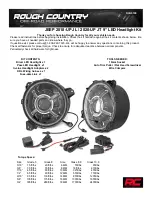
X
To reduce the tyre pressure: depress pres-
sure release button
E
next to pressure gauge
F
.
X
When the tyre pressure is correct, unscrew
the filler hose from the valve of the sealed
tyre.
X
Screw the valve cap onto the tyre valve of the
sealed tyre.
X
Pull the tyre sealant bottle out of the tyre
inflation compressor.
The filler hose stays on the tyre sealant bottle.
X
Drive to the nearest qualified specialist work-
shop and have the tyre changed there.
X
Have the tyre sealant bottle and the filler hose
replaced as soon as possible at a qualified
specialist workshop.
X
Have the tyre sealant bottle replaced every
four years at a qualified specialist workshop.
Battery (vehicle)
Important safety notes
Work on the battery, e.g. removing or fitting,
requires specialist knowledge and the use of
special tools. Therefore, always have work on
the battery carried out at a qualified specialist
workshop.
G
WARNING
Work carried out incorrectly on the battery
can lead, for example, to a short circuit and
thus damage the vehicle electronics. This can
lead to function restrictions applying to
safety-relevant systems, e.g the lighting sys-
tem, the ABS (anti-lock braking system) or the
ESP
®
(Electronic Stability Program). The oper-
ating safety of your vehicle may be restricted.
You could lose control of the vehicle, for
example:
R
when braking
R
in the event of abrupt steering manoeuvres
and/or when the vehicle's speed is not
adapted to the road conditions
There is a risk of an accident.
In the event of a short circuit or a similar inci-
dent, contact a qualified specialist workshop
immediately. Do not drive any further. Always
have work on the battery carried out at a
qualified specialist workshop.
Further information about ABS (
Y
page 62) and
ESP
®
(
Y
page 67).
G
WARNING
Electrostatic build-up can lead to the creation
of sparks, which could ignite the highly explo-
sive gases of a battery. There is a risk of an
explosion.
Before handling the battery, touch the vehicle
body to remove any existing electrostatic
build-up.
The highly flammable gas mixture is created
while the battery is charging and when jump-
starting.
Always make sure that neither you nor the bat-
tery is electrostatically charged. Electrostatic
charge is created, for example:
R
by wearing synthetic fibre clothing
R
by friction between clothing and the seat
R
when you pull or push the battery across car-
pet or other synthetic materials
R
when you rub the battery with a cloth
G
WARNING
During the charging process, a battery produ-
ces hydrogen gas. If a short circuit occurs or
sparks are created, the hydrogen gas can
ignite. There is a risk of an explosion.
R
Make sure that the positive terminal of a
connected battery does not come into con-
tact with vehicle parts.
R
Never place metal objects or tools on a bat-
tery.
310
Battery (vehicle)
Breakdo
wn
as
sis
tan
ce
















































